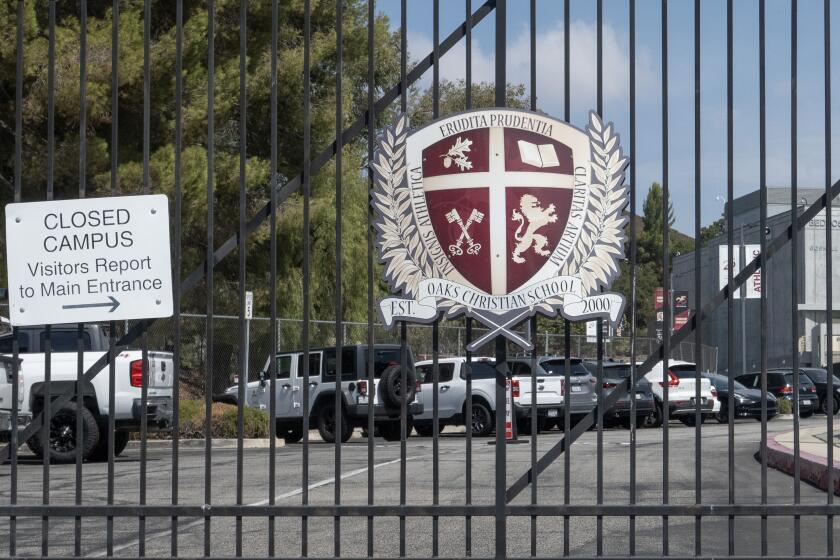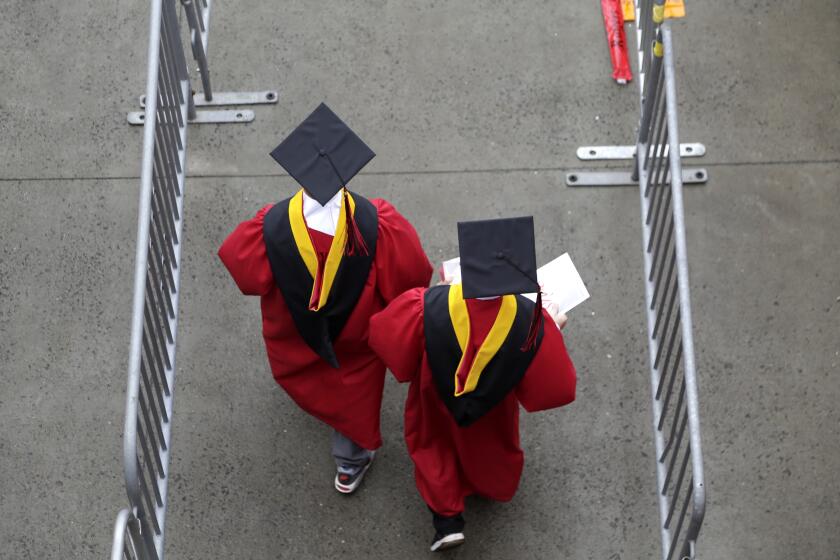It Takes a Common Vision
When I think back of my experiences teaching fourth grade at an inner city school, I often remember students like Robert. He was an extraordinary soccer player. Whenever Robert kicked a goal, his face shone with that pride and exuberance reserved exclusively for children.
Although brimming with potential, Robert was not a high achiever. He read well-below grade level in both English and his native Spanish. And like many of his classmates, he had learned the basic elements of geometry marking out the chunk of asphalt that served as our school’s soccer field amid the portable classrooms already encroaching upon the playground.
In 1991, that school was not unlike many urban schools in California. Per-student funding had plummeted in the previous two decades from among the highest in the nation to near the bottom, and school facilities had continued to deteriorate due to a lack of maintenance and insufficient resources for new school construction.
Our school, built to educate 500 children, was then accommodating more than 800 students. The library contained a few hundred worn and outdated books. Once a month my class was able to spend 50 minutes there with a volunteer librarian.
Like almost 300,000 other California teachers, I had the dubious distinction of teaching 33 fourth-grade children in one classroom. California’s educational system, we all thought, had hit rock bottom.
Unfortunately, we all thought wrong.
Today, rows of portable classrooms litter school playgrounds throughout the state, where thousands of “Roberts” once had room to score the winning goal. Children and teachers continue to struggle in overcrowded and dilapidated schools.
Rapidly increasing enrollment and the implementation of fundamentally sound, if not well-planned, educational reforms, such as class-size reduction, have exacerbated an already dire need for new and improved facilities. This crisis has forced most Californians to realize that we can no longer wait to invest in our schools and in the future of our children.
During the past two years, the state Legislature and governor have agreed that California needs to repair our deteriorating schools and build new ones. The realities are compelling:
* Enrollment Growth: Over the next 10 years, projected new enrollment will require facilities to accommodate an estimated 500,000 additional schoolchildren. We need to be building 12 new classrooms a day in California, and the longer we wait, the more it will cost. The price tag for providing a seat for every child, in a safe and secure school environment, will likely top $6 billion by the year 2000 and more than $42 billion by 2008.
* Class-size reduction: When the Legislature and governor supported class-size reduction, we all knew that a significant investment in school construction and repairs would be needed. According to a recent Joint Legislative Audit Committee survey of California school districts, class-size reduction accounted for the displacement of other equally important facilities and programs. Of the districts surveyed, 36% were forced to displace child-care facilities during 1996-1997 and 37% displaced centers during the 1997-1998 school year; 24% were forced to eliminate computer labs last year and 11% lost additional labs this year; 18% lost school libraries last year and another 13% lost them this year; 16% discontinued music and art programs last year and another 13% did the same this year; 28% eliminated space for special education last year and another 18% displaced similar facilities this year; 7% lost their multipurpose rooms last year and another 7% lost such spaces this year. It will take an investment of $2 billion just to restore these programs and fully implement current class-size reduction.
But to accomplish this daunting task, we must reject quick fixes and forge a common vision and a common will to rebuild public education for not only our kids, but for our grandchildren as well.
Communities across the state have stepped up to the plate by passing local school bonds, fully expecting the state to live up to its commitment to match that local investment with state dollars. The backlog of approved but unfunded State Allocation Board projects stands at $966 million and is growing every day.
So why have the governor and the Legislature failed to offer Californians a statewide school bond measure that will allow voters to decide this critical issue?
The answer strikes at the very heart of the dysfunctional partisanship that has accompanied the decline of California’s schools. Politicians mouth platitudes about the future of our children and our economy’s dependence on a well-educated work force. But special interests and politics continue to define the debate. The differences that denied California voters the opportunity to vote on a school bond in June were not beyond resolution. One cynical explanation for the lack of diligence on the part of the governor and some legislators is an unwillingness to forge a consensus on education during an election year.
The following issues form the barrier to placing a general-obligation bond on the ballot for the construction and repair of badly needed school facilities:
* Amount of the bond: Virtually everyone agrees that we need to pass a multibillion-dollar school bond. But voters will not have an opportunity to vote one in June because the governor and Legislature can’t agree on whether it should be $8 billion or $9.2 billion. Let’s split the difference and move ahead.
* Majority vote: In his 1998 State of the State Address, Gov. Pete Wilson proclaimed that the time had come to make it easier for voters to pass local education bond measures. The debate over whether to reduce the required two-thirds majority to a simple majority--or something in between--has raged for 20 years. A handful of lawmakers in the Assembly should not be allowed to hold a statewide bond measure hostage over this issue. Let’s separate the questions, place them both on the ballot and trust that California voters will recognize the current school facilities crisis and do the right thing.
* Developer fees: Since funding was slashed for schools, many local communities have come to rely on developer fees to help finance new schools. The logic behind this scheme dictates that when a new home is built, part of the purchase price should include the cost to build local schools for the children who will live in the house. This is how we view street lights, sewer lines and other improvements in new developments. But affordable housing is also a critical issue. An equitable and realistic statewide funding model for school construction is within reach. Developer fee politicking should not be used as an excuse to submarine a school bond.
* Programmatic reform: Virtually everyone agrees that there is a lack of accountability for the costs of building new schools. For this issue, one need look no further than at the Los Angeles Unified School District. LAUSD spent hundreds of millions of dollars in the last 10 years buying land and planning the construction of new schools. But not a single junior or senior high school has been built in those 10 years. Throughout the state, consultants and architects have been paid millions of dollars to put together school construction projects that have failed to materialize. Cost overruns have been rampant and competitive bidding requirements, which assure the maximum value in contracting for school construction, have been ignored or circumvented. Add to this a bureaucratic state funding structure that has tied the hands of local school districts in moving forward on repair and new construction projects.
Reforming the state bureaucracy and eliminating waste in government is the job of the Legislature and the governor, and we can no longer deny our responsibility for ensuring that taxpayer money is spent efficiently. A number of legislative measures are now being considered that would address controlling costs and accountability in the school construction process.
Similarly, measures to cut bureaucratic red tape in the bond fund allocation process and to monitor and expedite innovative approaches to school construction are being addressed by pending legislation.
Let’s put a school bond on the ballot and not risk our children’s future because decades of state and local officials have refused to control costs or fundamentally reform the construction process.
Taxpayers deserve a greater degree of accountability and fiscal responsibility from their elected representatives. While we are at the polls voting for a bond measure, we can also reject those elected officials who refuse to meet this challenge.
Forty years ago, I was a lot like Robert. I vividly remember the sunny morning at Eleanor Condit Elementary School in Claremont when I kicked the winning home run in the second-grade kickball tournament. I am now in the state Legislature and have assumed the responsibility of representing thousands of children in my district and millions of kids throughout California.
I often wonder what became of Robert. But mostly I wonder whether this Legislature and this governor will be able to muster the will, set aside politics and partisanship, and afford future generations the opportunity to receive the quality public education that California offered us all only a few short years ago.
More to Read
Sign up for Essential California
The most important California stories and recommendations in your inbox every morning.
You may occasionally receive promotional content from the Los Angeles Times.










